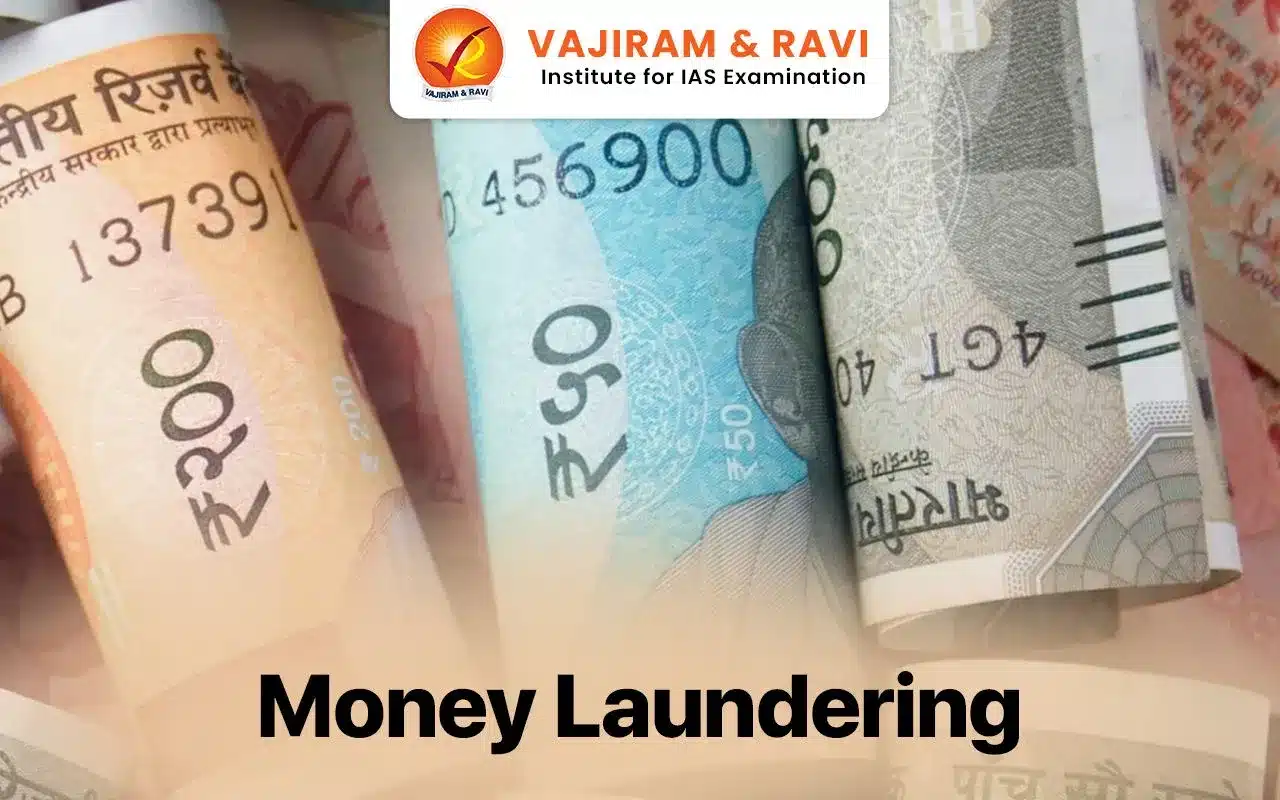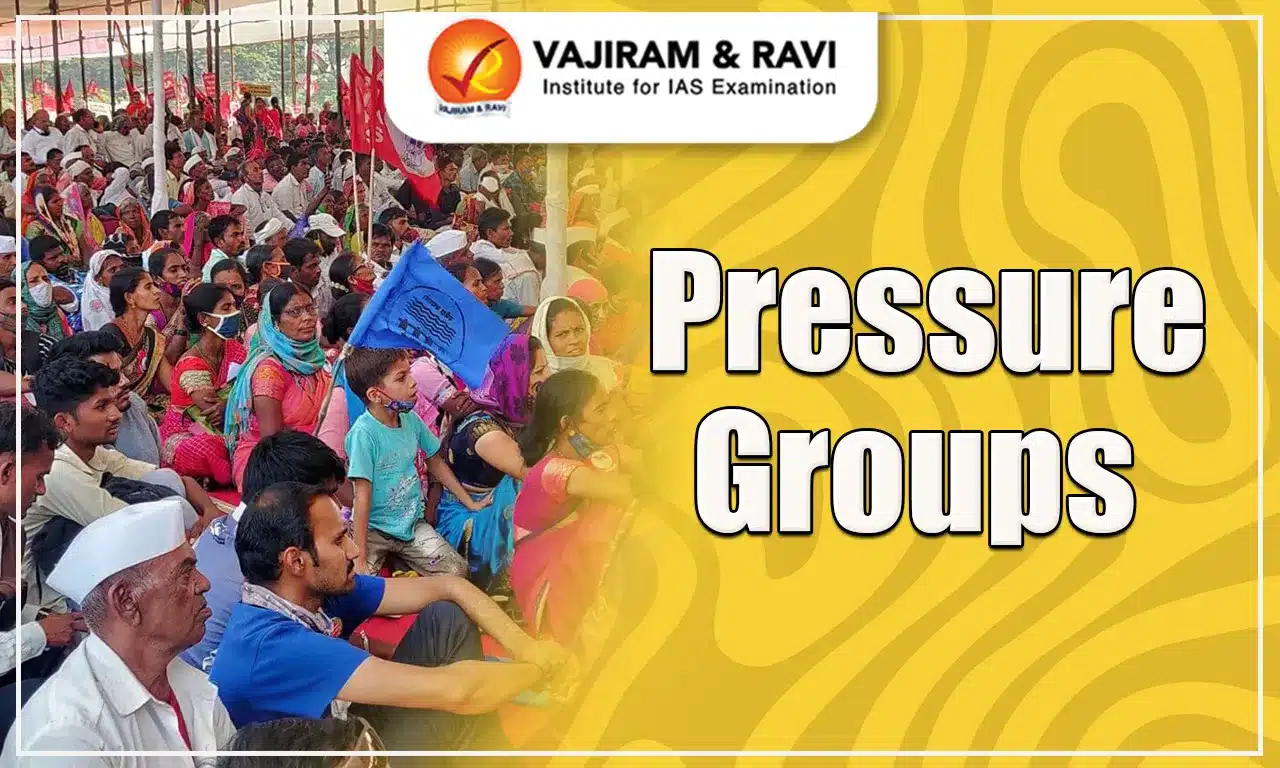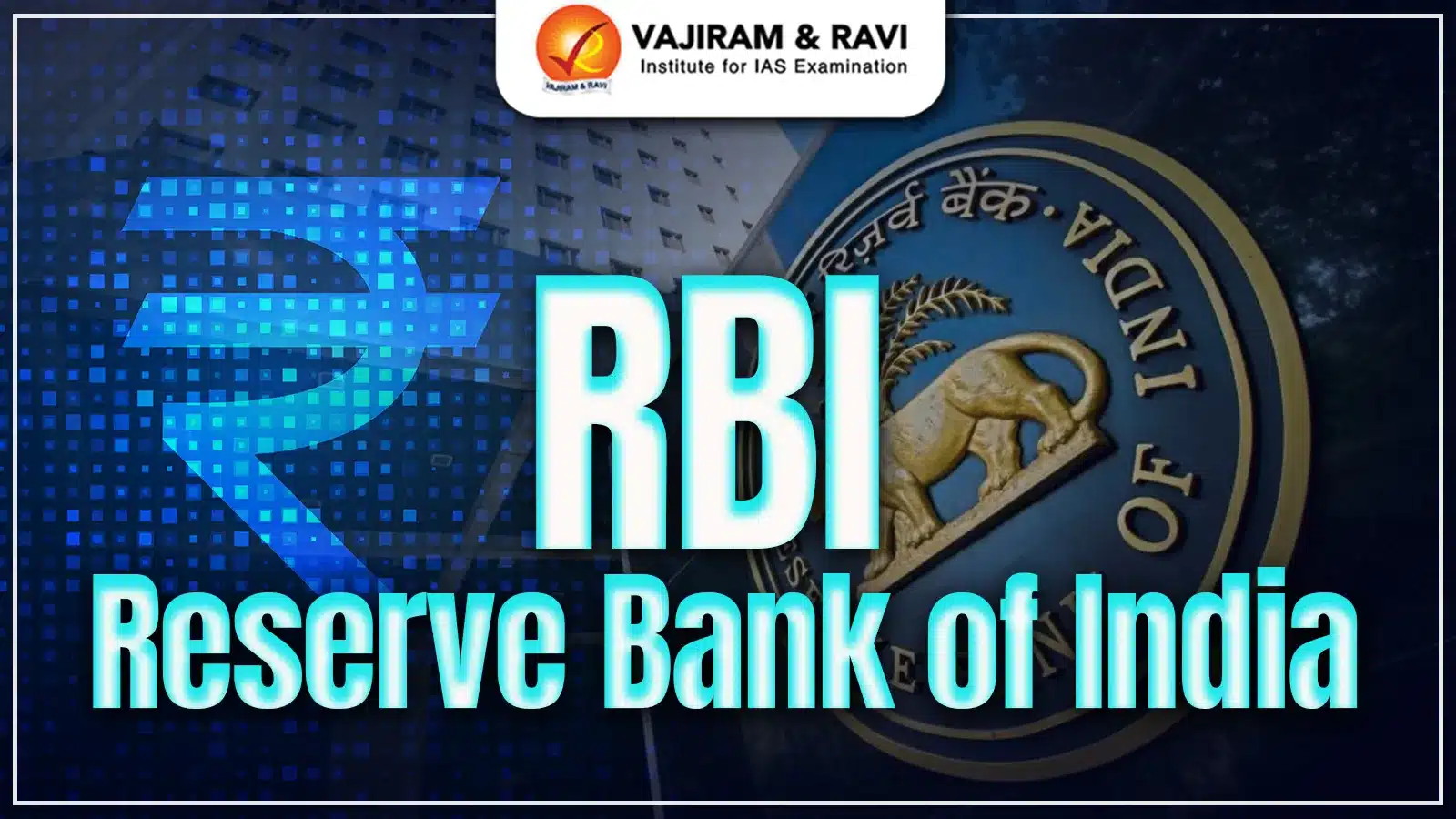Money Laundering is the processing of illegitimate money to disguise its illegal origin and make it appear as coming from legitimate sources. It is the process of making the dirty money look clean. The illegitimate money/ Black money arises from either proceeds of corruption, proceeds of crime, or tax evasion on legally earned money. It enables the criminal to enjoy these profits without fear of law enforcement agencies. Therefore, it is an essential step in almost all types of organised criminal activities such as drug trafficking, human trafficking, arms smuggling, and so on. Moreover, money laundering is also crucial in funding terrorism activities around the globe including in India.
Process of Money Laundering
Money laundering involves three stages that finally release laundered funds into the legal financial system. These three stages are as follows:
Placement
This is the first stage of the money laundering process when illegal funds are first introduced into the legitimate financial system. It is done through several methods, including wire transfers or depositing money into financial institutions such as banks, casinos, shops, and other businesses. During this phase, the following techniques are employed to conceal the source and ownership of the funds.
- Breaking up the money: Money is divided into smaller sums and depositing it into multiple bank accounts to avoid detection.
- Depositing across borders: The cash may be transported across borders and deposited in offshore financial institutions to conceal or disguise to purchase high-value assets, such as artwork, diamonds, and gold, which can be resold later for payment by cheque or bank transfer, further distancing the illegal proceeds from their source.
Layering
It involves multiple financial intermediaries and transactions to confuse Anti-money laundering (AML) checks.Layering money laundering is gradually adding legitimacy to the source of illicit money, making it difficult to track. It is generally considered the most complex stage. Some of the methods utilised during this step include:
- Changing the money's currency.
- Multiple inter-bank transfers.
- Multiple structured deposits and withdrawals (Smurfing)
- Purchasing high-value items such as diamonds, cars, or property.
- Multiple wire transfers between multiple accounts in different countries.
- Opening "shell" companies.
- Investing in businesses that require minimal paperwork, such as currency exchanges, art galleries, and car washes.
- Using money "mules."
Integration
In the last stage, dirty money re-enters the mainstream financial system as a legitimate transaction. This is done in the form of business investment, purchase, or the sale of an asset bought during the layering. The major methods used are as follows:
- Property dealing
- Front companies and fraudulent loans
- Foreign bank complicity
- False import/export invoices
Methods used in Money Laundering
Money laundering involves carrying out several transactions to hide the origin of the money. Some major methods/types of transactions carried out are as follows:
- Structuring or Smurfing: A smurf evades government scrutiny by breaking up large transactions into a set of smaller transactions that are each below the reporting threshold.
- “Mules” or cash smugglers: A money mule is someone who accepts and transfers money from fraud victims to smuggle it across borders and deposit it into foreign accounts. Some money mules are aware that they are aiding in illegal activity, but some are not aware.
- Gaming and Gambling sectors: The susceptibility to money laundering is high in these sectors. Given its high transaction volume and potential for anonymity, effective AML measures are necessary.
- Shell companies: These are created to obscure or hide the assets of another entity. These companies exist only on paper and lack a physical presence, staff, revenue, or significant assets. However, they may hold bank accounts or investments.
- Transaction Laundering: It is a type of electronic money laundering that uses e-commerce to obscure transactions.
- Smugglers: This technique is the earliest form of money laundering, involving the physical transport of cash across borders. This has been a favoured method for terrorists.
- Hawala: It is an informal system for transferring money around the world. Hawala transfers money without any physical money actually moving.
- Cybercrime: Cyber crimes such as theft of identity, illegal access to email, and credit card fraud are being carried out to aid in money laundering and terrorist activities.
- Open Securities Market: Laundering is possible due to instruments like hedge funds and participatory notes which have very limited disclosures to the source.
- Money laundering through cryptocurrencies: Cryptocurrencies are anonymous therefore the placement stage of the money laundering process is often absent.
Impacts of Money Laundering
Money laundering has severe and extensive impacts on businesses, economies, societies, and nations. The major impacts of money laundering are as follows:
Threats to Internal Security
Organised and transnational crime include money laundering in some form or other.
- Terror financing: Terrorism depends on money laundering to finance their activities.
- For example, funds flow from Pakistan’s ISI to the operatives of various terrorist groups like Harkat-ul-Mujahideen (HUM), the Harkat-ul-Jihad-al- Islamic (HUJI), the Lashkar-e-Taiba (LET) and the Jaish-e-Mohammad (JEM) to carry out terrorist acts against India.
- The 26/11 Mumbai Terrorist attack was financed through money laundering and hawala.
- Organised Crime: Narcotics trade, human trafficking, Illegal wildlife trade, and illegal arms trade all thrive on money laundering.
- Extremism: Naxalism/Left Wing extremism, and insurgency in northeast Indian states and other areas all benefit from money laundering.
- Cybercrime: Cybercriminals can use modern technology to launder money obtained through cybercrime.
Economic Implications
As emerging markets open up their economies and financial sectors, they become increasingly easy targets for money laundering activities. The major impacts are as follows:
- Adversely affects the Legitimate Private Sector: Money launderers use front companies, which can subsidise products and services at levels well below market rates.
- This results in the crowding-out of private-sector businesses by criminal organisations.
- It results in less profits and higher costs to businesses along with higher prices to consumers.
- Affecting the Integrity of Financial Markets: Large sums of laundered money may arrive at a financial institution but then disappear suddenly, in response to non-market factors, such as law enforcement operations. This may lead to liquidity problems and runs on banks.
- Criminal activity is associated with bank failures around the globe such as in the case of the European Union Bank.
- Loss of Control of Economic Policy: As per the United Nations Office on Drugs and Crime, the amount of money laundered globally in one year is 2–5%of global GDP.
- In some emerging markets these illicit proceeds may surpass government budgets, leading to a loss of control of economic policy by governments.
- Losing Effectiveness of Monetary Policy: Money laundering may result in inexplicable fluctuations in money demand and volatility of international capital flows, interest, and exchange rates.
- The unpredictable nature of money laundering leads to the loss of policy control.
- Economic Distortion and Instability: Money laundering redirects funds from sound investments to low-quality investments. E.g. in some cases, entire construction and hotel industries have been financed by money launderers. They may abandon these industries when their interests suit, causing a collapse of these sectors and immense damage to economies.
- Reduced confidence in markets due to money laundering diminishes legitimate global opportunities, sustainable growth, and investments while attracting international criminal organisations.
- Loss to Public Exchequer: Money laundering adversely affects government tax revenue and leads to reduced spending on welfare measures or infrastructure development.
- This also leads to higher tax rates for honest taxpayers.
Social Impacts
Apart from adversely affecting the economy and security of the nation money laundering also causes severe societal issues, listed as follows:
- Promote Crime: There are significant social costs and risks associated with money laundering. Money laundering is a crucial process for organised criminals that allows drug traffickers, smugglers, etc. to expand their operations.
- Increase Fiscal burden: This drives up the cost of government due to the need for increased law enforcement and health care expenditures (for example, for treatment of drug addicts) to combat the serious consequences that result.
- Rise in Corruption: Money laundering transfers economic power from the market, government, and citizens to criminals. Furthermore, the sheer magnitude of the economic power that accrues to criminals from money laundering has a corrupting effect on all elements of society. It may even lead to the virtual takeover of a legitimate government in extreme cases.
- Affect Stability: The social and ethical fabric of the society will be jeopardised, threatening the democratic institutions of society. Further, it can fuel distrust, protests, and anti-national activities.
Anti-Money Laundering Measures in India
Since 2020-21, the ED has registered 3,110 cases under the anti-money laundering law, and over 12,000 complaints to investigate alleged foreign exchange violations. The following Anti-Money Laundering measures are taken:
- The Prevention of Money Laundering Act, 2002 (PMLA): The provisions of this act apply to all financial institutions, banks (Including RBI), mutual funds, insurance companies, and their financial intermediaries. It provides for the confiscation of property derived from, or involved in, money laundering which is administered by:
- Financial Intelligence Unit (FIU-IND): FIU-IND is an independent statutory body under the PML Act, reporting directly to the Economic Intelligence Council (EIC) headed by the Finance Minister.
- It carries out verification of the identity of clients, maintenance of records, and reporting. Businesses with AML obligations report to the Financial Intelligence Unit.
- Enforcement Directorate (ED): It was formed under the Foreign Exchange Regulation Act of 1947. However, it has the role of enforcing the PML Act as well apart from the Foreign Exchange Management Act.
- It carries out the investigation of and prosecution of money-laundering offences.
- Customer due diligence (CDD) requirements: The banking industry, financial institutions, financial service providers, gaming businesses, and casinos have to ensure CDD requirements. It helps determine the customer's risk level. These organisations have to conduct AML checks, detect suspicious transactions of customers, and report to authorised units.
- Financial Intelligence Unit (FIU-IND): FIU-IND is an independent statutory body under the PML Act, reporting directly to the Economic Intelligence Council (EIC) headed by the Finance Minister.
- Foreign Exchange Management Act, 2000, (FEMA): It aims to prevent money laundering and other illegal activities related to foreign exchange transactions. It enables regulation of the flow of payments to and from people outside the country; regulation of all financial transactions involving foreign securities or exchange; enables the RBI to place restrictions on transactions from capital accounts, etc.
- RBI AML Guidelines: The guidelines enable Authorised Money Changers (AMCs) that engage in the purchase and/or sale of foreign currency notes/traveller cheques to put in place the policy framework and systems for the prevention of money laundering while undertaking money-changing transactions. Guidelines also include Know Your Customer (KYC) requirements.
- Benami Properties Transactions (Prohibition) Amendment Bill, 2015: The bill allows for the confiscation of Benami properties. A benami transaction is a property, held by one person but the consideration for it is paid by another.
- Narcotic Drugs and Psychotropic Substances Act, 1985: This Act does not explicitly mention money laundering, but it does include provisions to seize and confiscate the proceeds of drug trafficking.
- Measures to Prevent Terror Financing: The Unlawful Activities (Prevention) Act (UAPA)and amendments to the PMLA provide provisions to designate individuals and organisations as terrorist entities, freezing their assets and choking off funding.
- International Cooperation:
- Mutual Legal Assistance Agreements: Mutual legal assistance agreements facilitate the exchange of evidence and prosecution of money laundering cases with global dimensions.
- Membership of FATF: India has effectively used the grouping to push for sanctions against countries like Pakistan which was placed in the grey list for indulging in money laundering to fund terrorism.
- India is a signatory to various conventions of the UN: India is a signatory to the Vienna Convention to combat Money Laundering and other relevant conventions of the UN.
Anti-Money Laundering Measures at the Global Level
The global nature of money laundering requires global standards and international cooperation. The Anti-Money Laundering measures taken at the Global Level are as follows:
- Financial Action Task Force (FATF): The FATF is the global watchdog established at the G7 summit in Paris in 1989, to set standards and promote effective implementation of regulatory, legal, and operational measures to combat money laundering and terrorist financing.
- FATF Recommendations: These are a set of measures that are endorsed by over 180 countries.
- United Nations Global Programme against Money Laundering, Proceeds of Crime, and the Financing of Terrorism (GPML): The GPML was established in 1997 to help UN member states comply with UN conventions and other instruments related to money laundering and terrorism financing.
- UN Vienna Convention: Money laundering has been addressed in the UN Vienna Convention adopted in 1988.
- The convention mandates the member states to criminalise the laundering of money.
- It promotes international cooperation and makes extradition between member states possible.
- Other UN conventions: the UN Transnational Organised Crime Convention (2000), Convention for Suppression of Financing of Terrorism (1999); Convention against Transnational Organised Crime (2000), and Convention against Corruption (2003) contain provisions related to combating money laundering.
- Asia/Pacific Group on Money Laundering: The APG is an inter-governmental organisation, established on the lines of FATF, consisting of 42 member jurisdictions from the Asia-Pacific region.
- The APG aims to ensure that individual members effectively implement international standards against money laundering, terrorist financing, and proliferation financing related to weapons of mass destruction.
- Eurasian Group on Combating Money Laundering and Financing of Terrorism (EAG): The Eurasian Group is a regional body created on the lines of FATF.
- It comprises nine countries from the Eurasian region i.e. Belarus, China, Kazakhstan, Kyrgyzstan, India, Russia, Tajikistan, Turkmenistan, and Uzbekistan.
- EAG is also an associate member of the FATF.
Money Laundering UPSC PYQs
Question 1. Discuss how emerging technologies and globalisation contribute to money laundering. Elaborate measures to tackle the problem of money laundering both at national and international levels. (UPSC Mains 2021)
Question 2. India’s proximity to two of the world’s biggest illicit opium-growing states has enhanced her internal security concerns. Explain the linkages between drug trafficking and other illicit activities such as gunrunning, money laundering, and human trafficking. What countermeasures should be taken to prevent the same? (UPSC Mains 2018)
Question 3. Money laundering poses a serious security threat to a country’s economic sovereignty. What is its significance for India and what steps are required to be taken to control this menace? (UPSC Mains 2013)
Last updated on November, 2025
→ Check out the latest UPSC Syllabus 2026 here.
→ Join Vajiram & Ravi’s Interview Guidance Programme for expert help to crack your final UPSC stage.
→ UPSC Mains Result 2025 is now out.
→ UPSC Notification 2026 is scheduled to be released on January 14, 2026.
→ UPSC Calendar 2026 is released on 15th May, 2025.
→ The UPSC Vacancy 2025 were released 1129, out of which 979 were for UPSC CSE and remaining 150 are for UPSC IFoS.
→ UPSC Prelims 2026 will be conducted on 24th May, 2026 & UPSC Mains 2026 will be conducted on 21st August 2026.
→ The UPSC Selection Process is of 3 stages-Prelims, Mains and Interview.
→ UPSC Result 2024 is released with latest UPSC Marksheet 2024. Check Now!
→ UPSC Prelims Result 2025 is out now for the CSE held on 25 May 2025.
→ UPSC Toppers List 2024 is released now. Shakti Dubey is UPSC AIR 1 2024 Topper.
→ UPSC Prelims Question Paper 2025 and Unofficial Prelims Answer Key 2025 are available now.
→ UPSC Mains Question Paper 2025 is out for Essay, GS 1, 2, 3 & GS 4.
→ UPSC Mains Indian Language Question Paper 2025 is now out.
→ UPSC Mains Optional Question Paper 2025 is now out.
→ Also check Best IAS Coaching in Delhi
Money Laundering FAQs
Q1. What are the steps in the money laundering process?+
Q2. What is black money?+
Q3. What Is an Example of Money Laundering?+
Q4. What is the full form of CDD?+
Tags: money laundering quest

















